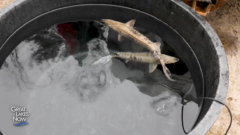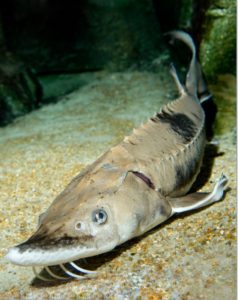Lake sturgeon added to endangered list, but things are looking up

Lake sturgeon, one of the largest and oldest species of fish in the Great Lakes, are in more trouble than we thought.
In December, the International Union for the Conservation of Nature downgraded its status from Least Concern to Endangered based on shrinking populations over the past three generations, which is between 250 and 300 years for this long-lived fish.
Great Lakes Now
https://www.greatlakesnow.org/2023/02/lake-sturgeon-added-to-endangered-list-but-things-are-looking-up/


